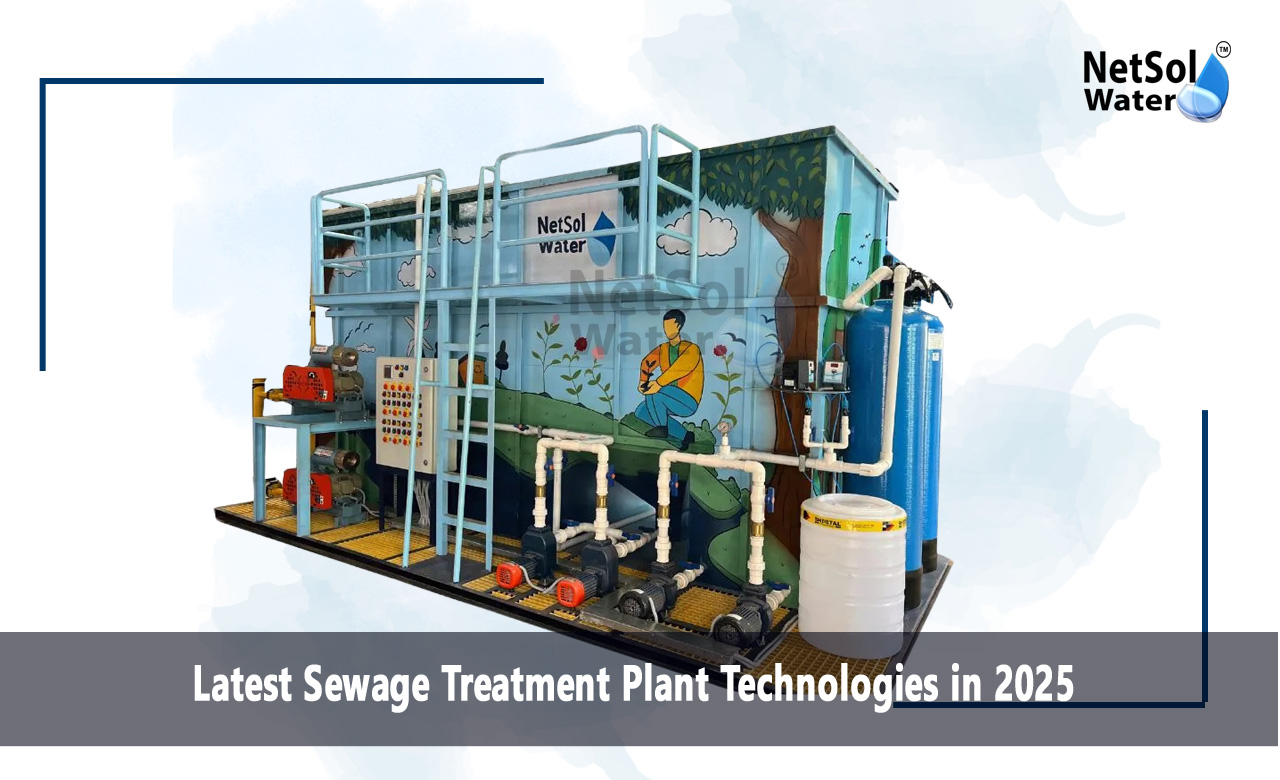Latest STP Plant Technologies in 2025
Wastewater work changes fast in 2025 and new choices shape city planning and factory design. Here we look at the Latest Sewage Treatment Plant Technologies in 2025 and it focuses on three systems that lead current practice. These systems guide how plants cut organic load, remove solids and save space while they lower energy use. Engineers pick a system to match the site, the load and the reuse needs. Investors and local bodies watch cost and long term operation as they plan upgrades. Understanding the strengths and tradeoffs of MBBR, SBR and MBR helps teams choose a clear path for durable treatment and safe reuse. Recent market work shows strong growth for each technology and many new projects use them in cities and in industry.
MBBR
How MBBR works?
MBBR uses small carriers that float in the tank to hold biofilm on their surface. The film breaks down organics and it lets a plant run with higher biomass per volume. Designers add aeration to keep the carriers moving and to supply oxygen to microbes. The result is steady removal with a smaller reactor footprint than older systems. Research shows MBBR finds use where space limits sitting and where load swings occur.
Benefits of MBBR
MBBR reduces footprint and it handles high organic load with stable output. Plants that use MBBR cut solids loss and they need less sludge handling. Operators can retrofit MBBR into old tanks to boost capacity without new construction. This lowers project cost and it speeds deployment in growing towns.
Best use cases
MBBR fits decentralised plants, hotels, campuses and small industrial units. It suits places with space limits and with variable inflow. Project teams often pair MBBR with simple tertiary steps for reuse in irrigation or cooling.
SBR
How SBR works?
SBR treats water in timed cycles inside one or a few tanks. The cycle uses fill, react, settle and decant steps to match load and to control aeration. Operators tune the cycle to boost nutrient removal or to save power. The batch approach gives control with fewer tanks and it fits plants that face variable inflow from housing clusters and markets.
Benefits of SBR
SBR offers flexible operation and it adapts to changing load without major rebuild. The single tank layout cuts civil work and it eases retrofits. Many projects use SBR where operators need precise control of aeration and settling. New larger scale SBR projects also link to energy recovery and to biogas units in circular models.
Best use cases
SBR suits medium-scale municipal plants, industrial parks and projects that need staged upgrades. Large city planners may also use SBR for sections that feed a central plant or a cluster treatment model. Recent project planning shows SBR as a central choice for combined treatment and energy recovery schemes.
MBR
How MBR works?
MBR pairs biological treatment with membrane filtration to remove solids and microbes in one train. Membranes give a high clarity effluent that suits reuse for cooling, toilet flushing and some industrial uses. Plants use hollow fibre or flat sheet membranes and they control flux to limit fouling. MBR needs careful operation but it yields consistent water quality and it reduces need for tertiary steps.
Benefits of MBR
MBR gives small footprint and high effluent quality. It supports direct reuse and it lowers river discharge impact. Operators save civil space and they can match strict reuse standards. New projects also add automation to monitor membrane health and to lower operator load. Recent site examples show MBR in large campuses and IT parks.
Best use cases
MBR fits places that need high reuse quality and where land is scarce. It makes sense for tech parks, hospitals, hotels and some industries that need low solids water. Project teams weigh capital cost and membrane replacement against reuse value and long-term water savings.
Choosing among MBBR, SBR and MBR
Key factors to compare
Teams should check inflow quality, flow pattern and reuse goals when they choose a system. They should also review land, cost, energy, price and operator skill. MBBR suits retrofit and space limited sites. SBR gives strong control and it works well for batch feed and for energy linking. MBR gives top reuse quality and it fits high value reuse projects. Market work shows demand rising for each technology as planners balance cost and performance.
Steps to deploy
A good path starts with a site audit then a pilot and then a phased build. Training and remote monitoring reduce downtime and they improve life cycle cost. Finance options and performance contracts can move a plan from idea to delivery.
Conclusion
Latest STP Technologies in 2025 shape how cities and firms meet water needs and reuse goals. These systems cut space use, lower energy and deliver treated water that supports reuse and reuse based economics. If you plan a plant upgrade or a new STP project get in touch for more information or to request a consultation on Latest STP Technologies in 2025. Our team can assess your site map benefits and propose a plan that meets your needs and budget.
Contact Netsol Water at:
Phone: +91-9650608473, Email: enquiry@netsolwater.com



